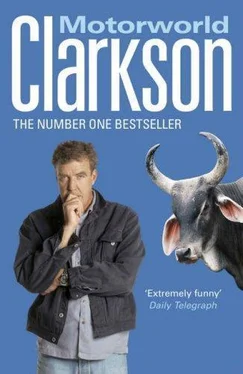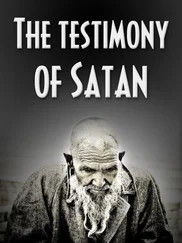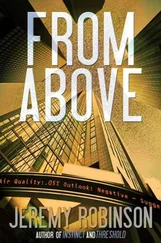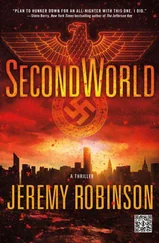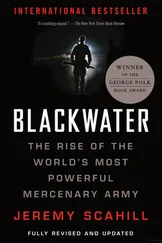Jeremy Clarkson - Motorworld
Здесь есть возможность читать онлайн «Jeremy Clarkson - Motorworld» весь текст электронной книги совершенно бесплатно (целиком полную версию без сокращений). В некоторых случаях можно слушать аудио, скачать через торрент в формате fb2 и присутствует краткое содержание. Город: London, Год выпуска: 2004, ISBN: 2004, Издательство: Penguin, Жанр: Прочая документальная литература, Юмористическая проза, на английском языке. Описание произведения, (предисловие) а так же отзывы посетителей доступны на портале библиотеки ЛибКат.
- Название:Motorworld
- Автор:
- Издательство:Penguin
- Жанр:
- Год:2004
- Город:London
- ISBN:978–0–141–90136–7
- Рейтинг книги:5 / 5. Голосов: 1
-
Избранное:Добавить в избранное
- Отзывы:
-
Ваша оценка:
- 100
- 1
- 2
- 3
- 4
- 5
Motorworld: краткое содержание, описание и аннотация
Предлагаем к чтению аннотацию, описание, краткое содержание или предисловие (зависит от того, что написал сам автор книги «Motorworld»). Если вы не нашли необходимую информацию о книге — напишите в комментариях, мы постараемся отыскать её.
Motorworld — читать онлайн бесплатно полную книгу (весь текст) целиком
Ниже представлен текст книги, разбитый по страницам. Система сохранения места последней прочитанной страницы, позволяет с удобством читать онлайн бесплатно книгу «Motorworld», без необходимости каждый раз заново искать на чём Вы остановились. Поставьте закладку, и сможете в любой момент перейти на страницу, на которой закончили чтение.
Интервал:
Закладка:
But today, the only records being made are crime statistics.
So what went wrong? Well, most importantly, there was the oil crisis which made people slightly less willing to run a V8 with its Oliver-Reedesque thirst. They wanted smaller engines and turned their attention to the newfangled Japanese offerings.
And hey, these cars never broke down, so even when the oil problem went away many stuck with Honda and Datsun and Toyota.
Then there was assembly-line automation, which was bad enough, but cheap land prices didn’t help either.
When the car company wanted to update a factory, it didn’t simply put in a robot here and a conveyor belt there. No, it shut up shop completely and built a new plant, usually out of town where land was cheaper.
Detroit might have been able to cope with all these things but unfortunately there was economic trouble in the South and thousands of black workers were heading to Detroit in a fruitless search for work. They’d heard about the promise of three bucks an hour but when they got there, the cupboard was bare.
Social unrest was inevitable. In 1967, the African-Americans took to the streets and had themselves the riot to end all riots.
Bob Seger, who at the time was an up-and-coming rock and roller from Detroit, remembers coming home from a gig one night to find tanks on the streets. ‘I just couldn’t believe it. This was Detroit and the whole place was on fire. There were police everywhere. They’d got the national guard out. It was like a war zone. It was worse than a war zone. It was hell.’
Shortly after, the White Flight began, as respectable middle-class white families packed up and moved to the suburbs, where half the factories had gone anyway.
In ten years, the population of Detroit halved from two million to one million. Even the Motown record label, which had made Detroit a world capital of music too with its wealth of black artists like Stevie Wonder, Martha Reeves, Diana Ross and the Temptations, moved to Los Angeles.
They weren’t ‘Dancing in the Streets’ any more. Madonna may have been born there but she left, too.
And that was it. Detroit became a wrecked shell whose population is still falling. There are no jobs downtown today and when Hudson’s, the big department store, closed down, most of the city-centre retailers followed suit and went under too.
It’s hard for a European to understand this because we have no equivalent, but there is a very real possibility that one day, Detroit will implode: that it will simply cease to exist.
Already, there are people in the suburbs who are proud to say they haven’t been downtown in twenty years. The nineteen-year-old doorman at our hotel in Dearborn admitted one night he’d never been there.
He simply couldn’t believe it when, every morning, we bundled our kit into the trucks and went off to the centre, even though it was only twelve miles away. He was even more amazed, though, when we actually came back each night.
He obviously had a word with the manager who, one day, advised us not to go down there any more. When he found that we had to and that we preferred to drive in on Michigan Avenue, rather than down the safer expressway, he rushed off to explain to the girls on the reception desk that our rooms might become available sooner than he’d thought.
Despite this attitude, the mayor, Dennis Archer, is ebullient, saying that Detroit was only murder capital of the world once and that no one will beat the city in making quality cars. ‘We’ll take on anyone, any time,’ he crows.
But he’s missing the point because none of the car firms is dependent on Detroit any more. GM has a factory in Mexico for chrissakes. Honda is in Marysville, Ohio. Toyota and BMW have factories in the USA too, but they’re not even in Michigan.
Sure, Ford, GM and Chrysler — the only remaining US car firms — still build cars on their home turf, but they’re in the leafy suburbs. And when I say leafy, I’m talking equatorial rainforest.
Should you ever need to go to Detroit, drive west from the city centre on Jefferson, past Belle Isle and make sure your windows are up. Crash the red lights too, because to stop here is to invite the unwelcome intrusion of a 9-mm slug.
And then, at one set of lights, you’ll notice that everything changes. On the east side, the shops are burned out and shabby. Black men shuffle around in the wreckage looking for anything that could be lunch — a bedspring or a butt end, perhaps.
On the other side of the lights, the fire hydrants are painted Dulux commercial white, the street lamps are mock Tudor and the houses are immaculate and huge. Every fourth car is a police cruiser and every third person is out jogging. Welcome to Grosse Point, a lakeside suburb where the big car-firm bosses live.
I hated it. This was like something out of The Stepford Wives and we’d only been there for five minutes when the cops arrived. They’d had a flood of calls about a group of guys in jeans. Jeans in Grosse Point. You’d get further in a G-string at Henley.
I swear that before we left we even saw someone cutting his lawn with a pair of nail scissors.
It’s not quite so bad on the other side of the city, north of Eight Mile Road which is the accepted barrier between rich and poor, black and white, civilisation and a Bronze Age war zone.
These are just like any American suburbs — until the Friday-night reminder that you’re in The Motor City. Or near it anyway.
There’s a pretty vibrant classic-car scene out there as car workers past and present feel the need to restore and pamper great cars from the days when their city was great too. They meet up at weekends with their customised, power-packed Chevvies and Fords and discuss each other’s sometimes spectacular beards over a Bud or two.
They even have their own radio station called Honey which is run from the back of a four-wheel-drive truck. It simply turns up at the meeting and plays a selection of good old rock and roll.
I’ll tell you this. Wandering around a car park full of hot Mustangs and lowered Vettes on a hot summer’s night with Bob Seger belting out of a couple of hundred car radios takes some beating.
What beat it was what happened when AJ’s Lounge and Eaterie closed. These guys didn’t simply get into their cars and go home. No, they got in, eased out onto the road alongside each other, waiting for the lights to go green and had a race.
All over suburban Detroit every summer weekend every straight bit of road echoes to the sound of supercharged V8s doing full-bore standing quarters.
Big money changes hands. Bets of up to a thousand dollars are not unknown as the cars line up… on the public roads.
You can barely see through the haze of tyre smoke as El Camino pickups roar off the line at full revs. Wilbur and Myrtle can only stare in open-mouthed wonderment as their puny little Honda finds itself sandwiched between a lime-green Dodge Charger and an egg-yellow Plymouth Super Bird.
This is as subtle as a Big Mac, as restrained as a can of Coke and as American as both. Big cars, big engines, big people and big beards, racing each other over a quarter of a mile straightaway.
These guys spit at Ferraris and laugh at Lotus Elans. They are not interested in a car’s ability to handle the bends on a switchback mountain pass. They don’t care about pinball-sharp steering or five-valve technology.
They’d drink a pint of warm beer before they’d own up to a fondness for European and Japanese engines that rev to 8000 rpm.
They like their V8s big and lazy and their rear tyres massive. American street racing is straight down the line and simple. It’s a national characteristic. The only thing in the world less complex than a blue-collar American is wood.
Читать дальшеИнтервал:
Закладка:
Похожие книги на «Motorworld»
Представляем Вашему вниманию похожие книги на «Motorworld» списком для выбора. Мы отобрали схожую по названию и смыслу литературу в надежде предоставить читателям больше вариантов отыскать новые, интересные, ещё непрочитанные произведения.
Обсуждение, отзывы о книге «Motorworld» и просто собственные мнения читателей. Оставьте ваши комментарии, напишите, что Вы думаете о произведении, его смысле или главных героях. Укажите что конкретно понравилось, а что нет, и почему Вы так считаете.
